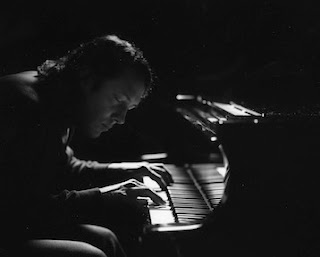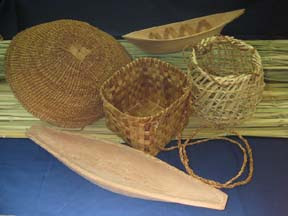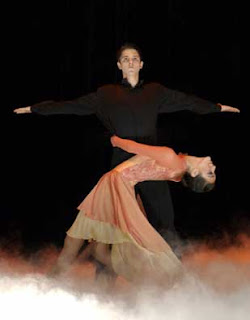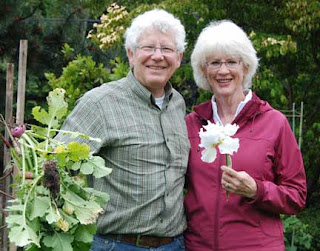by Linda PrattI get my ticket at a table set up in St. Luke’s church, receive a program from a volunteer at the door, walk inside and take a seat. The Federal Way Symphony is about to begin it’s April 11th concert, “Spring, Piano is His Forte!” featuring Mark Salman.
There’s a large screen up high in the front of the sanctuary with information referring to the
composers we’re about to hear. The sizable crowd sits silently in anticipation. The conductor, Brian Davenport, handsomely dressed in a black tuxedo, shares with the audience some of his knowledge relevant to the composers, their music, and the times they lived in. He then turns to face the orchestra. Gracefully, his baton begins to move, the musicians play, and wonderful music fills the air.
Did you ever wonder what was involved in creating this delightful experience? Maureen Hathaway and I, both Federal Way Arts Commissioners, spent time watching set up, rehearsal, and with many gracious
Federal Way Symphony employees and volunteers to find the answer. So, lets go “Bach” to the future and find out!
It all began back in mid 2009 when the music director (and conductor), Brian Davenport, decided on the music. He conferred with the pianist, Mark Salman, to select just the right pieces of music to please the audience, work together, and provide the most impact.
I interviewed Mark and found that he had 6-8 months to learn the piece and write a cadenza.
“What’s a cadenza?” I asked. (My music experience consists of listening to it!) A cadenza is a virtuoso solo passage inserted into a movement in a concerto. It gives the pianist an opportunity to improvise something in his own style and makes every performance unique. It’s the last few weeks before the concert that Mark works most intensely on the piece. He also has to learn the orchestra parts, so he can interact with them smoothly.
As soon as the music has been determined, the musicians are selected. That is done by the personnel manager, Mannfried Funk and the music director. Heather Lewis, office administrator, makessure everyone has completed the appropriate paperwork. The music is ordered from the publishers and distributed to the players a couple weeks before the rehearsal.
Once the music and musicians are determined, the stage manager (aka orchesterwart), Kirby Luther, discusses the requirements with the personnel manager and conductor. Then he creates a schematic of the stage with the exact placement of each instrument and musician. The musicians all have to fit on the stage in proper relation to each other and the conductor. His goal is to allow the musicians to concentrate on their music and not worry about their seating or music stands.
Next, plans are made to arrange stage hands for setting up and taking down chairs, stands, and platforms at rehearsals and the actual performance. But wait, there’s more! Don’t forget the sound and lighting requirements! Those are the responsibility of Tim Waisanen. One of his many jobs is to design a configuration of the sound and lighting systems appropriate for the concert. There’s also the preparation of the slides that are shown before and during the concert, and at intermission. Where do the musicians store their cases and get dressed? Ask Tim!
This year, due to budget constraints, there is only one full rehearsal before the concert. There was an additional rehearsal of just the principal players one or two days earlier. When we arrived at St. Luke’s on Tuesday afternoon for the rehearsal before Sunday’s concert, we were greeted with the sound of wobbly carts carrying stacks of chairs down the hall to the sanctuary. Before the chairs could be set up, large, carpeted platforms were put in place to create the stage. Carefully following the layout plan, the chairs and music stands were all arranged. Next, the rehearsal piano was rolled into its location.
The musicians arrived dressed like everyone else here in the northwest: jeans, casual shirts, and comfortable shoes. Some sat, some strolled, some chatted as they warmed up on their instruments. They came well prepared to play their parts. The purpose of the rehearsal is so that everyone can hear what everyone else does and experience how they fit in with the overall sound.
The day of the concert dozens of volunteers take their positions, and there are many to take! Tables need to be set up and manned for cookies, coffee, and tickets. Ushers find their place by the doors. The sound and lighting is checked and double checked. The piano, rented from Sherman Clay in Seattle, is carefully rolled in. It’s on its side covered in moving blankets, without legs. The mover screws the legs on, gets it standing up, and Kirby and Brian Ailinger roll it to its proper position on the stage. The pianist and the conductor both check its sound. A camera is set up so the audience can view the keyboard on the large overhead screen.
While this is going on, the musicians are downstairs dressing into their black suits and outfits. Some are relaxing and others are practicing. Back upstairs, the audience is arriving and purchasing tickets. Ushers are taking tickets, and people are finding their seats. The concert is about to begin. If all goes as planned, you won’t notice all the work that has gone on over the past year. All you’ll see is the Federal Way Symphony doing what they do...providing us with world class music right here in Federal Way.






























